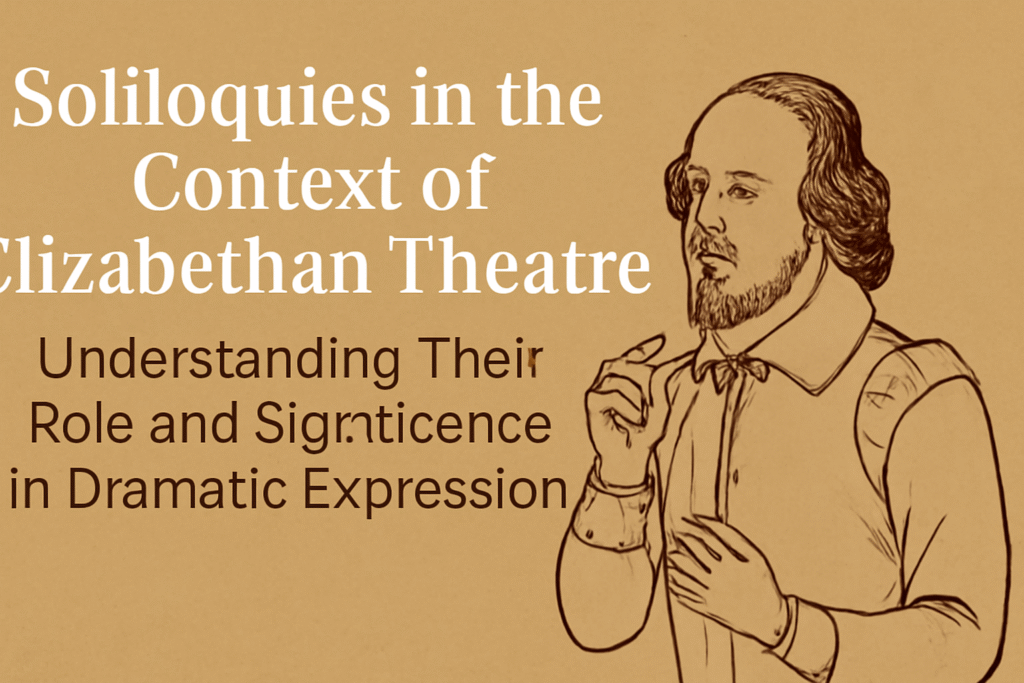
Soliloquies in the Context of Elizabethan Theatre: Understanding Their Role and Significance in Dramatic Expression
Have you ever wondered how Soliloquies in the context of Elizabethan theatre can speak directly to the audience, revealing their deepest thoughts and emotions? 🤔 This powerful dramatic tool, known as the soliloquy, was central to Elizabethan theatre and is still influential today. But what exactly makes a soliloquy so impactful in plays like Hamlet or Macbeth? In the context of Soliloquies in the context of Elizabethan theatre, soliloquies are more than just monologues; they offer a window into a character’s soul, creating emotional connections and heightening the drama.
If you’re curious about how this iconic device works, you’re in the right place! In this article, we will explore soliloquies in the context of Elizabethan theatre, diving into their significance, types, and role in shaping unforgettable characters. Ready to unlock the secrets of dramatic expression? Let’s dive in! 🎭
Table of Contents
Toggle1. The Historical Context of Soliloquies in Elizabethan Theatre

Soliloquies in the context of Elizabethan theatre, theatre was at the height of its cultural influence, with playwrights like William Shakespeare, Christopher Marlowe, and Ben Jonson captivating audiences with their powerful storytelling. The use of soliloquies in the context of Elizabethan theatre was a unique and critical element in shaping the emotional depth and complexity of characters.
The Birth of Soliloquies
Soliloquies in the context of Elizabethan theatre first gained prominence in Elizabethan plays as a way to offer direct insight into a character’s thoughts. With limited stage technology and elaborate scenery, playwrights relied on soliloquies to communicate inner conflict, desires, and motivations—elements that were difficult to convey through action alone. 🎭
In Shakespeare’s plays, Soliloquies in the context of Elizabethan theatre allowed characters to express personal dilemmas, moral struggles, or reflections on life, often directly addressing the audience. For example, Hamlet’s famous “To be or not to be” soliloquy plunges the audience deep into the protagonist’s existential crisis, which would have been hard to portray with the limited visual effects available at the time.
Why Soliloquies Were Essential

The limited stage settings of the time made soliloquies an indispensable tool for storytelling. Without the luxury of elaborate backdrops or props, the playwrights turned to language to carry the weight of the plot and characters’ emotions. Soliloquies filled this gap, making them not only a significant but also a necessary feature of Elizabethan theatre.
Additionally, soliloquies offered a way for characters to “speak” their truth, breaking down barriers between them and the audience. This allowed for more dynamic storytelling, where the audience could follow the character’s personal journey, understanding their motives and struggles from the inside out.
The Soliloquy as a Dramatic Device
Elizabethan theatre thrived on its ability to engage and captivate the audience, and soliloquies played a vital role in this. They were often used during key moments of tension or personal conflict to give the audience access to a character’s most vulnerable and raw emotions.
Shakespeare’s use of soliloquies, in particular, gave his plays depth and nuance. Characters like Macbeth, Hamlet, and Richard III use soliloquies to reveal their plans, fears, and ambitions—elements that drive the plot forward and add layers to the drama. 🌟
By understanding the historical context of soliloquies, we gain insight into why they were not just a theatrical technique but a revolutionary method for exploring the human psyche on stage. The soliloquy became a powerful tool for breaking down characters and revealing the complexities of their inner worlds to the audience.
This section provides a foundational understanding of the historical context of soliloquies, showing their significance in making Elizabethan theatre a dynamic and emotionally engaging experience. Stay tuned as we dive deeper into how these soliloquies shaped characters and the audience’s connection to the story!
2. Types of Soliloquies in Elizabethan Theatre

Soliloquies in Elizabethan theatre are not just a one-size-fits-all device. Playwrights like Shakespeare used them in various ways, each serving a distinct purpose in the development of character and plot. Let’s explore the different types of soliloquies and their role in shaping the drama on stage. 🎭
1. Reflective Soliloquies
Reflective soliloquies are often used to showcase a character’s internal struggle or contemplation. In these soliloquies, characters pause to reflect on their past actions or on life’s deeper questions. They are a moment for the character—and the audience—to step back and evaluate what has been and what may come next.
- Example: Hamlet’s “To be or not to be” soliloquy is one of the most famous reflective soliloquies in theatre. Here, Hamlet contemplates life, death, and his purpose, giving the audience a deep insight into his troubled state of mind.
Reflective soliloquies are a powerful way to highlight a character’s emotional state and their philosophical musings, giving the audience an opportunity to connect on a more personal level with the character’s turmoil. 💭
2. Confessional Soliloquies
In confessional soliloquies, characters reveal their true feelings, desires, or regrets—often in a moment of vulnerability. These soliloquies expose their inner world, offering an authentic look at their motivations and personal conflicts.
- Example: In Macbeth, Macbeth’s soliloquy before he kills King Duncan reveals his guilt and fear. He wrestles with his ambition and moral compass, making this moment of confession crucial for understanding his eventual downfall.
Confessional soliloquies make the character relatable and human. They allow the audience to witness their moral dilemmas and sympathize with their emotional struggles. ❤️
3. Philosophical Soliloquies
Philosophical soliloquies delve into the existential questions of life. These soliloquies are less about action and more about pondering universal truths—such as the nature of existence, power, and fate.
- Example: Romeo and Juliet features soliloquies that explore the theme of fate, especially when Romeo reflects on the stars and his destiny, marking the tragic nature of the story.
Philosophical soliloquies elevate the drama by addressing timeless themes, encouraging the audience to reflect on the larger questions of life that transcend the stage. 🌌
4. Ambitious Soliloquies
These soliloquies revolve around a character’s ambition, often expressing their desires to gain power, wealth, or status. These speeches often highlight the character’s drive and determination, setting the stage for the conflicts that will follow.
- Example: Macbeth’s soliloquy where he envisions himself as king and contemplates the steps he must take to secure his power is a prime example. His ambition drives the tragic events that unfold.
Ambitious soliloquies are key to understanding a character’s motivations and the actions they will take to achieve their goals—often leading to their tragic fate. 🔥
3.The Role of Soliloquies in Character Development
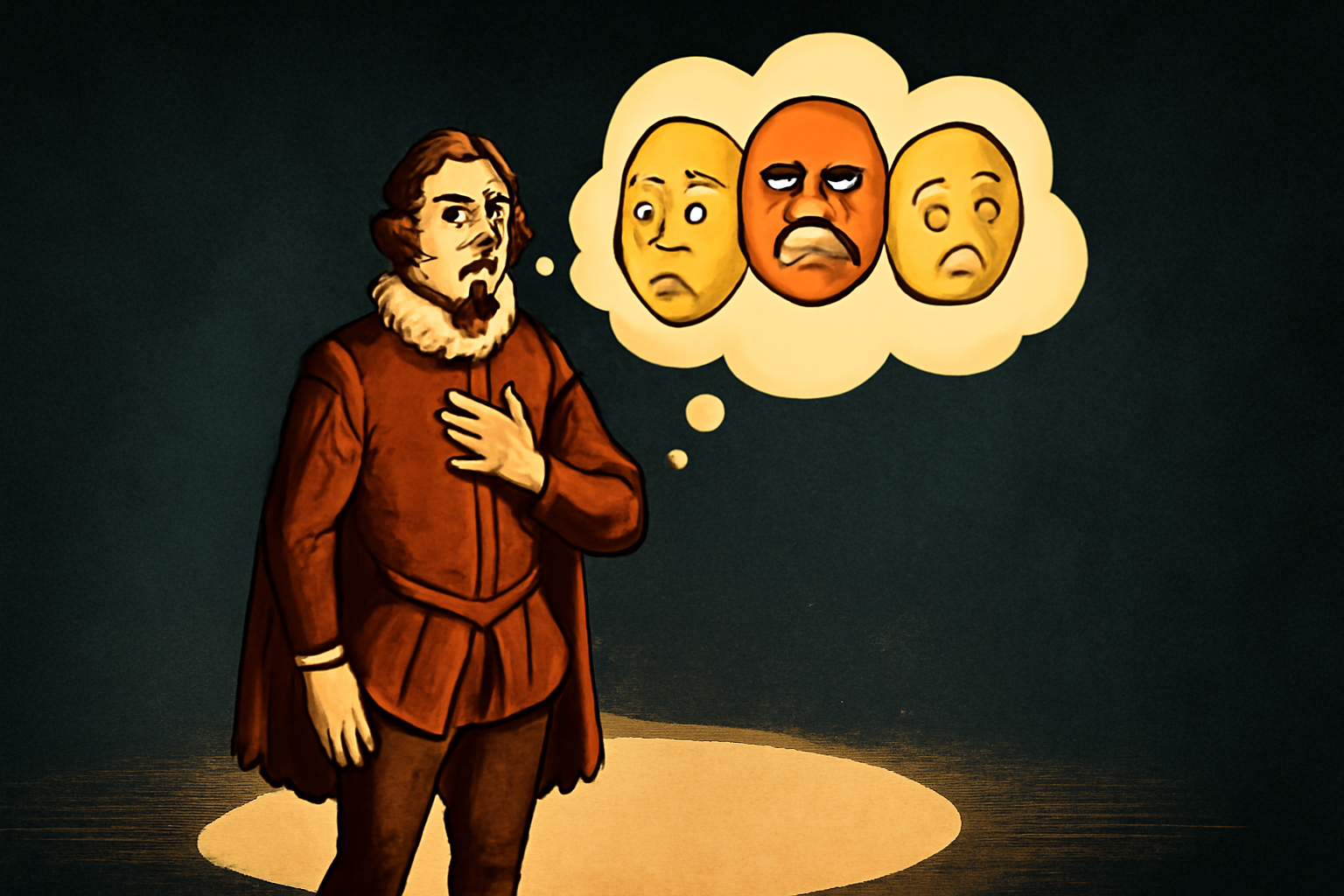
In Elizabethan theatre, soliloquies are more than just moments of introspection—they play a crucial role in shaping a character’s development. By allowing characters to express their inner thoughts, soliloquies offer the audience a direct window into their minds. This deepens the emotional impact of the play and gives the character a layered, complex persona. Let’s explore how soliloquies contribute to character development. 🌱
1. Revealing Inner Conflict
One of the most powerful functions of soliloquies is to showcase a character’s internal conflict. These moments allow the audience to witness the character grappling with their emotions, decisions, or moral dilemmas.
- Example: In Hamlet, the iconic “To be or not to be” soliloquy gives the audience a direct view of Hamlet’s struggle between life and death. His internal conflict defines his character arc, helping us understand his indecisiveness and despair.
Soliloquies turn abstract inner turmoil into a tangible, relatable experience for the audience, which helps build a connection with the character. ⚖️
2. Humanizing the Character
Soliloquies give characters a chance to express vulnerabilities and flaws, making them more human. By sharing their deepest fears, desires, and regrets, characters become more relatable and multidimensional.
- Example: In Macbeth, Macbeth’s soliloquies reveal his guilt and paranoia after committing murder. His fear and remorse show his inner struggle, making him more than just a power-hungry villain.
When a character opens up in a soliloquy, it creates a bridge between them and the audience, making their journey more personal and engaging. 💔
3. Revealing Motivations and Intentions
Soliloquies often provide the clearest insight into a character’s motivations. When a character expresses their plans, desires, or fears, it sheds light on their actions in the play.
- Example: Iago’s soliloquies in Othello reveal his deep-seated jealousy and manipulative nature. His internal monologues not only explain his actions but also show how he justifies his deceit.
By revealing motivations, soliloquies act as a guide, helping the audience understand why characters act the way they do and what drives them. 🔍
4. Facilitating Character Evolution
Soliloquies often mark key moments of change in a character’s journey. Through their monologues, characters evolve—whether it’s a shift in perspective, a new realization, or a decision to act.
- Example: In King Lear, Lear’s soliloquies become more reflective and filled with self-awareness as he descends into madness. His soliloquies serve as emotional checkpoints, showcasing his transformation from a powerful king to a vulnerable, broken man.
Through soliloquies, the audience can trace the evolution of characters, witnessing their growth or downfall over the course of the play. 🌿
4.The Importance of Soliloquies in Engaging the Audience
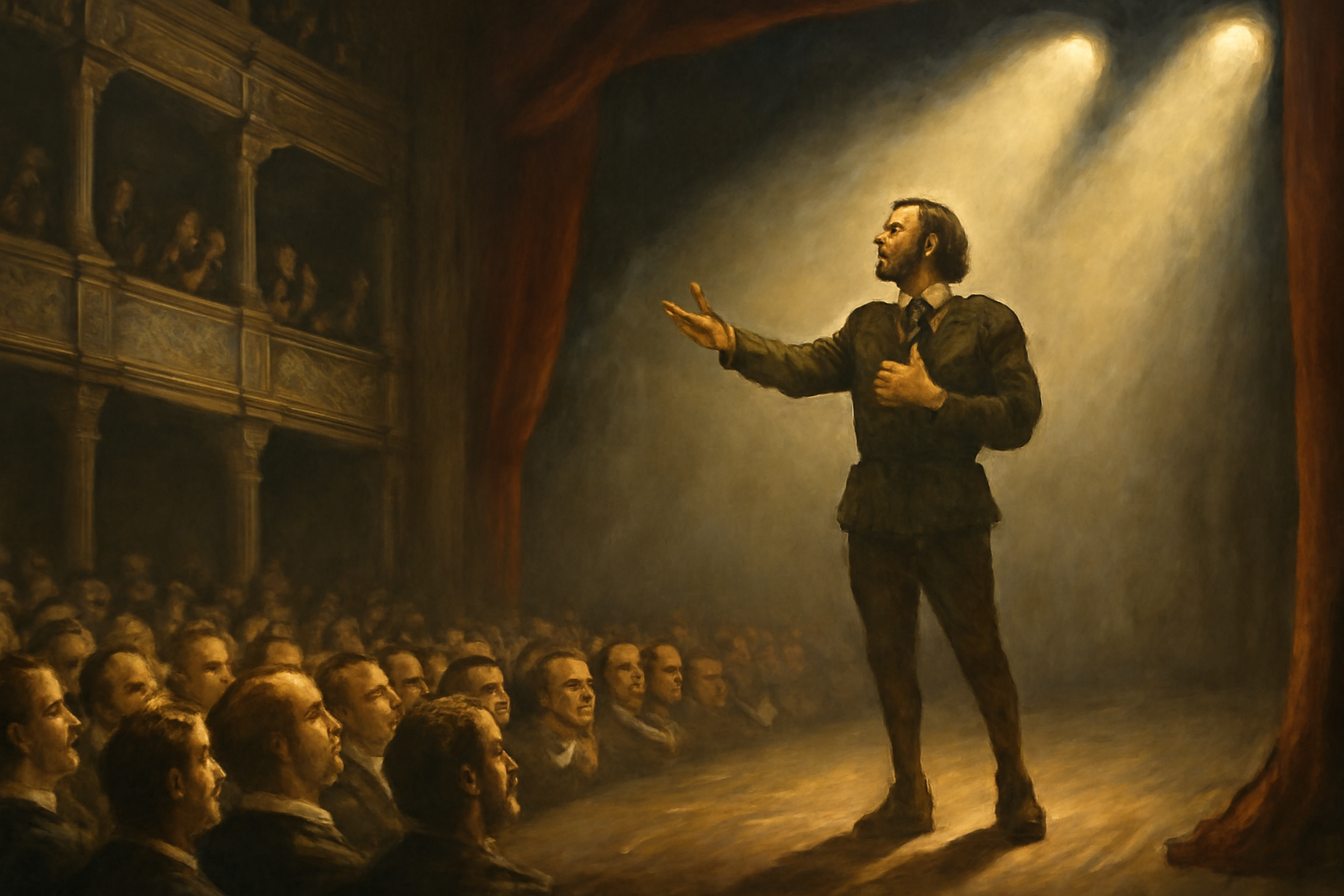
In Elizabethan theatre, soliloquies are not just important for character development—they are a powerful tool for engaging the audience. These moments draw viewers deeper into the story, creating a connection between the character and the audience. Here’s how soliloquies keep us hooked from start to finish. 🎭
1. Breaking the Fourth Wall
Soliloquies are unique because they allow characters to speak directly to the audience. This breaks the “fourth wall,” creating an intimate space where the character shares their innermost thoughts. This direct communication makes the audience feel involved in the character’s journey.
- Example: Hamlet’s soliloquy about life and death speaks directly to the audience, inviting them to reflect on their own existential questions. By addressing the audience, Hamlet draws them into his internal battle.
This moment of connection makes the experience more personal and immersive for the audience, fostering a deeper emotional investment in the story. 🧠
2. Inviting the Audience into the Character’s Mind
Soliloquies give the audience access to a character’s most private thoughts. Instead of just observing their actions, the audience gets to experience the character’s emotional and intellectual world. This adds layers to the character’s motivations and allows viewers to better understand their choices.
- Example: In Macbeth, Macbeth’s soliloquies reveal his escalating paranoia and guilt after committing murder. Through his words, the audience can empathize with his inner turmoil, making his eventual downfall more tragic.
By offering this insight, soliloquies create a bond between the audience and the character, encouraging empathy and understanding. 💔
3. Creating Dramatic Irony
Soliloquies are also an effective way to build dramatic irony. The audience often knows more than the other characters, which creates tension and anticipation. As a character reveals their plans or desires, the audience can predict the consequences, building suspense as the story unfolds.
- Example: In Othello, Iago’s soliloquies reveal his cunning and deceptive nature, allowing the audience to see his manipulation of Othello before the other characters do. This adds a layer of tension, as viewers know the tragic fate awaiting the characters.
This technique keeps the audience on edge, making the experience more engaging and compelling. 🔥
4. Deepening Emotional Engagement
Soliloquies often occur during moments of intense emotion or conflict, providing a raw, unfiltered view into the character’s psyche. These moments deepen the emotional engagement of the audience, making them more invested in the character’s journey and the outcomes of their actions.
- Example: In King Lear, Lear’s soliloquies towards the end of the play, as he grapples with madness and loss, are heart-wrenching. The audience feels his anguish, which heightens the emotional stakes of the play.
Through soliloquies, the audience is emotionally drawn into the character’s struggles, making the overall experience more impactful. 😢
5.Common Themes Explored in Soliloquies

Soliloquies are not just a platform for characters to speak their minds—they also serve to explore universal themes that resonate deeply with audiences. Through these introspective speeches, Elizabethan playwrights like Shakespeare tackled some of life’s most profound questions. Let’s explore the common themes that often surface in soliloquies and how they enrich the dramatic experience. 🌟
1. Moral Dilemmas
One of the most common themes in soliloquies is the exploration of moral conflict. Characters often face difficult decisions that challenge their values, leading to deep introspection. These moral dilemmas highlight the internal struggle between right and wrong.
- Example: In Macbeth, Macbeth grapples with his ambition and the moral consequences of murder. His soliloquies reveal his internal battle between his desire for power and his guilt over the bloody actions he contemplates.
Moral dilemmas in soliloquies allow the audience to witness a character’s ethical compass in real-time, making their eventual choices all the more impactful. ⚖️
2. Existential Questions
Soliloquies often serve as a platform for characters to ponder the big questions of existence: What is the purpose of life? What happens after death? These reflective moments allow the audience to connect with universal struggles about identity, meaning, and the human condition.
- Example: Hamlet’s famous “To be or not to be” soliloquy delves into questions of life, death, and suffering. Through his words, the audience is invited to reflect on the value of life and the inevitability of death.
These existential soliloquies transcend time and place, allowing audiences to reflect on their own views about existence and mortality. 🌌
3. Ambition and Power
Ambition is another recurring theme in soliloquies, particularly in the works of Shakespeare. Many characters wrestle with their ambitions, which often lead them down a dark and destructive path. These soliloquies explore the character’s drive for power, control, or success.
- Example: In Macbeth, Macbeth’s soliloquies reveal his growing ambition to become king, driving him to murder and betrayal. His internal monologues show how ambition blinds him to the consequences of his actions.
Soliloquies centered around ambition shed light on the dangerous consequences of unchecked desires, making them a critical part of character development. 🔥
4. Guilt and Regret
Guilt and regret are powerful emotions often explored in soliloquies. When characters commit actions they regret, their soliloquies offer a glimpse into their remorse and the psychological toll of their decisions. These moments humanize the character and invite the audience to empathize with their internal struggles.
- Example: In Macbeth, Macbeth is haunted by guilt after killing King Duncan. His soliloquies reflect his fear and regret, highlighting the emotional consequences of his actions.
These soliloquies often reveal the psychological impact of wrongdoing, adding layers of complexity to the character’s journey. 💔
5. Love and Desire
While soliloquies are often filled with dark themes like ambition and guilt, they also explore more positive and human emotions, like love and desire. Characters often use soliloquies to express their love, longing, or emotional attachment to others.
- Example: In Romeo and Juliet, Romeo’s soliloquy about Juliet expresses his deep love and admiration for her. This moment offers a tender, intimate glimpse into his feelings and the intensity of their romantic connection.
Love-based soliloquies bring a sense of passion and vulnerability to the stage, allowing the audience to connect with the character’s emotional journey. 💖
6.Famous Soliloquies in Elizabethan Theatre

Elizabethan theatre is renowned for its captivating soliloquies—moments of deep introspection that reveal the true essence of a character. These speeches not only define the characters but also encapsulate universal themes of human nature. Let’s explore some of the most famous soliloquies that have left a lasting impact on theatre and literature. 🎭
1. Hamlet’s “To Be or Not to Be”
One of the most iconic soliloquies in the history of theatre, Hamlet’s “To be or not to be” is a profound meditation on life, death, and the human condition. In this soliloquy, Hamlet contemplates the nature of existence and struggles with the idea of mortality. His questioning of whether to continue suffering through life or end it through death resonates deeply with audiences, making it one of Shakespeare’s most famous lines.
- Key Themes: Existentialism, the value of life, the fear of the unknown.
- Impact: This soliloquy invites the audience to reflect on their own mortality, making Hamlet’s inner conflict universally relatable. 💭
2. Macbeth’s “Is This a Dagger Which I See Before Me?”
In Macbeth, the title character is haunted by ambition and guilt after receiving the prophecy that he will become king. This soliloquy occurs just before Macbeth kills King Duncan. As he envisions a dagger leading him to his victim, Macbeth’s internal conflict between his desire for power and his moral hesitation comes to the forefront.
- Key Themes: Ambition, guilt, and moral conflict.
- Impact: The soliloquy highlights the psychological tension and the destructive nature of unchecked ambition. It foreshadows Macbeth’s tragic descent into madness. 🔪
3.Iago’s “I Am Not What I Am”
Iago’s soliloquies in Othello reveal his manipulative nature and his deep-seated jealousy. In his “I am not what I am” soliloquy, Iago confesses his deceitful intentions and outlines his plan to destroy Othello. This moment gives the audience insight into Iago’s cunning, making him one of Shakespeare’s most notorious villains.
- Key Themes: Deception, manipulation, jealousy.
- Impact: Iago’s soliloquy establishes his villainous character and sets the tone for the tragic events that follow. His candidness with the audience builds dramatic irony, as we know his plans while the other characters remain in the dark. 💥
4. Richard III’s “Now is the Winter of Our Discontent”
In Richard III, Richard uses his opening soliloquy to outline his political ambitions and his desire to seize the throne. He expresses his dissatisfaction with his current situation and his determination to manipulate others to gain power. This soliloquy reveals Richard’s Machiavellian nature and establishes him as a master manipulator.
- Key Themes: Power, ambition, self-pity.
- Impact: This soliloquy gives the audience a glimpse of Richard’s ruthlessness and his desire to reshape his destiny. It sets the stage for his rise to power and eventual downfall. 👑
5. Juliet’s “O Romeo, Romeo!”
In Romeo and Juliet, Juliet’s soliloquy reveals her internal conflict about love and identity. As she contemplates Romeo’s identity and the feud between their families, she expresses a longing for a love that defies societal expectations. This soliloquy is one of the most romantic moments in Shakespeare’s works, capturing Juliet’s deep passion and determination.
- Key Themes: Love, identity, fate.
- Impact: Juliet’s soliloquy highlights the intensity of her emotions and sets the stage for the tragic love story that unfolds. It resonates with the audience’s own experiences of love and desire. 💖
7.How to Analyze a Soliloquy: A Step-by-Step Guide
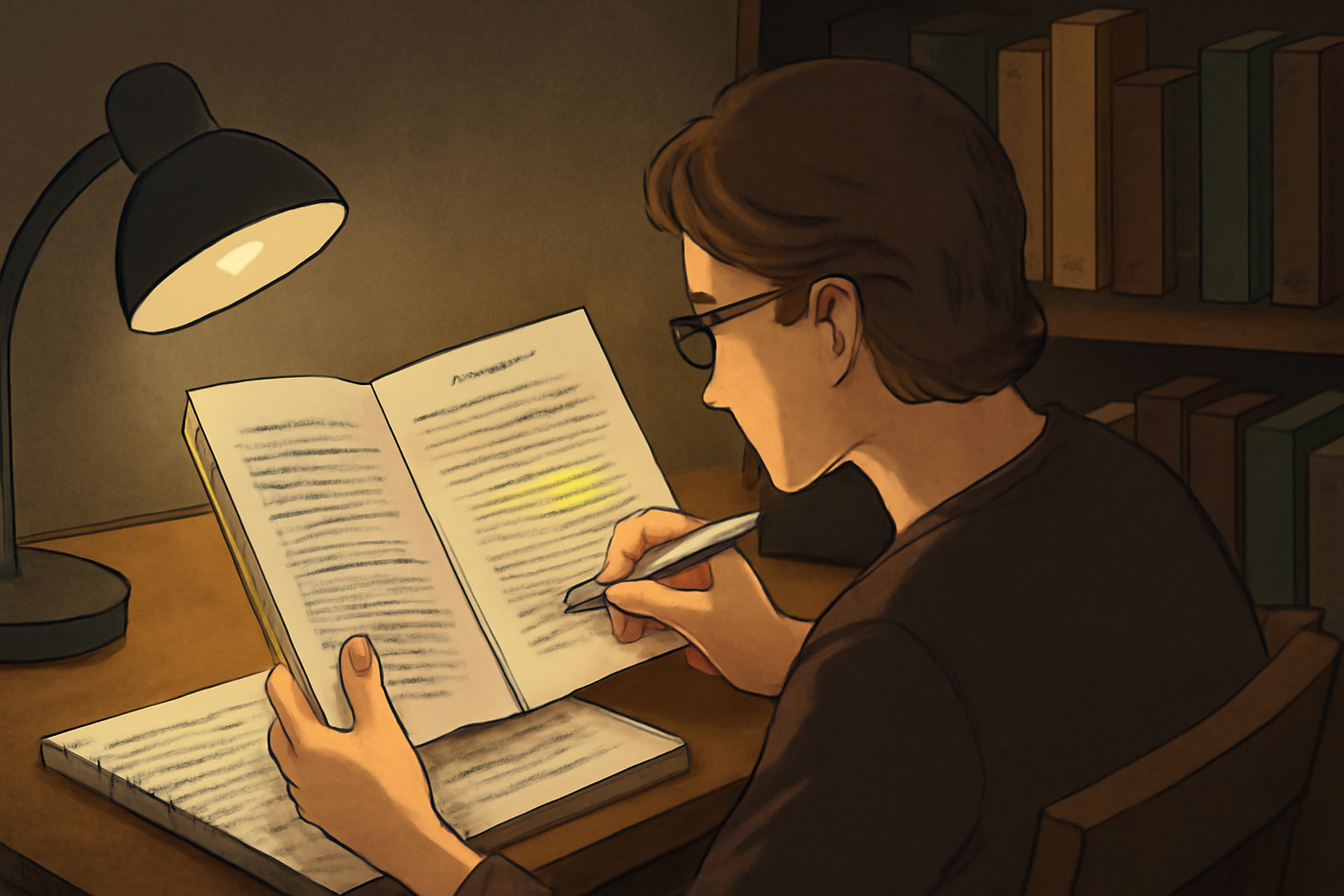
Analyzing a soliloquy can unlock deeper meanings in a play and offer a clearer understanding of the character’s inner world. Whether you’re a student, actor, or theatre enthusiast, knowing how to break down a soliloquy helps you grasp its emotional weight and thematic significance. Here’s a simple, step-by-step guide to analyzing a soliloquy. 🎭
1. Identify the Speaker’s Emotional State
The first step in analyzing a soliloquy is to identify the character’s emotional state. Is the character feeling conflicted, guilty, angry, or passionate? Pay attention to the tone and word choice used in the soliloquy—this will give you clues about how the character is feeling.
- Example: In Macbeth, Macbeth’s soliloquy before he kills King Duncan reveals his deep guilt and hesitation. The language reflects his inner turmoil as he debates whether to go through with the murder.
Understanding the emotional context is key to grasping the character’s motivations. 💔
2. Look for Key Themes
Each soliloquy often revolves around central themes like love, ambition, guilt, or identity. As you read or listen, pinpoint the themes that are being explored. These themes are often universal and help connect the character’s internal conflict to broader human experiences.
- Example: Hamlet’s “To be or not to be” soliloquy revolves around existential questions of life, death, and suffering. The themes of mortality and despair are central to understanding Hamlet’s internal struggle.
Identifying these themes will deepen your understanding of the character and the play itself. 🌌
3. Analyze the Language and Imagery
The language and imagery used in a soliloquy are crucial for conveying the character’s thoughts and emotions. Look for metaphors, similes, and symbolic language. These literary devices often provide deeper insight into the character’s psychological state.
- Example: In Romeo and Juliet, Juliet’s soliloquy uses imagery like “a rose by any other name” to explore themes of love and identity. The metaphor highlights her conflict between love and societal expectations.
By breaking down the language and imagery, you can uncover hidden layers in the soliloquy that reveal more about the character’s mindset. ✨
4. Consider the Soliloquy’s Context in the Play
To fully understand a soliloquy, it’s essential to consider its place within the broader context of the play. What has happened just before the soliloquy? What does it reveal about the character’s development or the direction the plot is taking?
- Example: Macbeth’s soliloquy about the dagger occurs just before he murders King Duncan. It marks a turning point, where his ambition overtakes his hesitation, signaling his descent into violence and madness.
The context of the soliloquy helps you understand its significance in the overall narrative. 📜
5. Reflect on the Character’s Motivation
One of the most important parts of analyzing a soliloquy is figuring out what motivates the character to speak these words. What does the character hope to achieve by expressing their thoughts? Are they trying to justify their actions, seek comfort, or make a decision?
- Example: In Othello, Iago’s soliloquies often reveal his motivations for manipulating others. His desire for revenge against Othello is made clear in these speeches, helping the audience understand his cunning actions.
By focusing on motivation, you can better understand the character’s intentions and how they drive the plot forward. 🔍
6. Consider the Impact on the Audience
Finally, think about how the soliloquy impacts the audience. Does it create suspense, deepen emotional engagement, or provoke reflection? A well-delivered soliloquy invites the audience to step into the character’s shoes and experience their thoughts firsthand.
- Example: Hamlet’s soliloquy on death engages the audience by prompting them to reflect on their own views about life and mortality. It makes the audience feel Hamlet’s despair and uncertainty.
The emotional impact is often the key to why soliloquies are so powerful in theatre. 💥
8.The Enduring Power of Soliloquies in Theatre
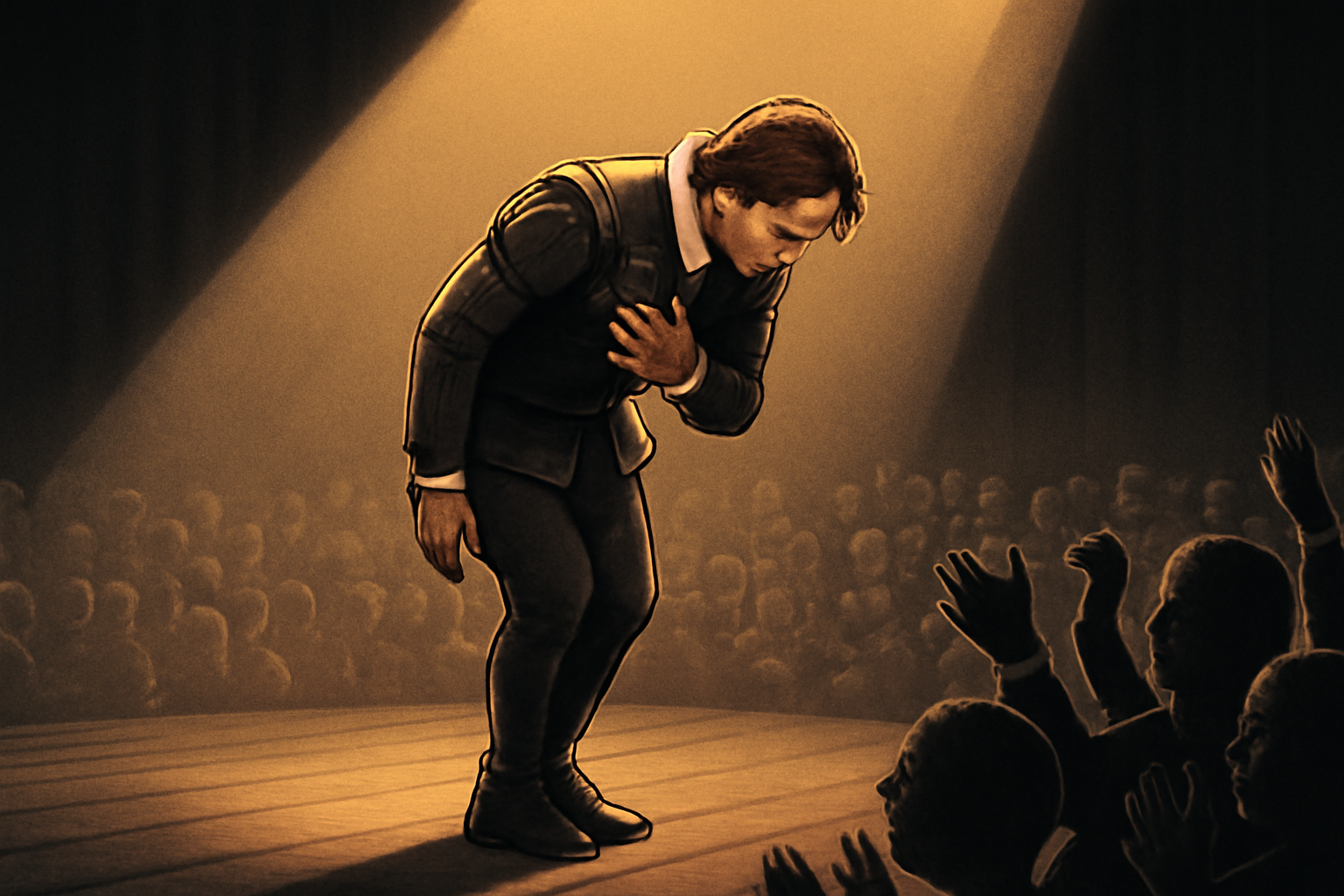
Soliloquies in the context of Elizabethan theatre have played an irreplaceable role in shaping how characters and stories unfold on stage. Through powerful introspective speeches, playwrights like Shakespeare offered audiences a window into the emotional and psychological depth of their characters, making their internal conflicts as compelling as the external action. 🎭
From Hamlet’s existential musings to Macbeth’s guilty thoughts, soliloquies reveal the complexities of human nature and invite the audience to engage with universal themes like ambition, love, guilt, and mortality. These monologues provide a unique opportunity to connect with characters on a deeper level, allowing us to explore the intricate layers of their personalities and motivations. 🌟
Even today, soliloquies continue to influence modern storytelling. Their ability to break the fourth wall, deepen emotional engagement, and explore profound themes ensures their lasting power in theatre, film, and beyond. Whether you’re a seasoned theatre lover or new to the world of drama, understanding the role of soliloquies can transform the way you experience and appreciate theatre. 🎬
As we’ve explored, soliloquies are not just a theatrical device—they are a bridge that connects the character’s inner world with the audience, offering us an intimate, reflective, and often emotional glimpse into their soul. So, the next time you watch a play or read a script, pay close attention to the soliloquies; they are where the heart of the drama beats loudest. ❤️
Thank you for joining us on this exploration of soliloquies in Elizabethan theatre—may your understanding of these powerful speeches deepen your love and appreciation for the art of storytelling!
Frequently Asked Questions (FAQs)
1. What is a soliloquy in Elizabethan theatre?
A soliloquy is a speech delivered by a character alone on stage, where they express their inner thoughts, emotions, and reflections. Unlike a dialogue, the character is not speaking to other characters but directly to the audience, providing insight into their motivations and struggles. 🎭
2. Why are soliloquies important in Elizabethan theatre?
Soliloquies are important because they offer deep character development and allow the audience to understand a character’s innermost thoughts. They help build emotional connections and provide clarity on the character’s motivations, conflicts, and decisions. 🌟
3. How do soliloquies engage the audience in theatre?
Soliloquies break the “fourth wall,” allowing characters to speak directly to the audience. This creates a sense of intimacy, letting the audience see the character’s inner world, which makes the story more engaging and emotionally powerful. 💬
4. What are some famous soliloquies in Shakespeare’s plays?
Some famous soliloquies include Hamlet’s “To be or not to be,” Macbeth’s “Is this a dagger which I see before me,” and Iago’s “I am not what I am” from Othello. These soliloquies explore deep themes like existence, ambition, and deception, making them unforgettable moments in theatre history. 🎭
5. What themes are commonly explored in soliloquies?
Soliloquies often explore themes such as existentialism (life and death), ambition, guilt, moral dilemmas, love, and identity. These themes are universal and resonate with the audience on a personal level, helping to deepen the emotional impact of the play. 💔
6. How can I analyze a soliloquy in a play?
To analyze a soliloquy, focus on the character’s emotions, language, themes, and motivations. Look at how the soliloquy fits within the context of the play and what it reveals about the character’s development and the overall plot. Understanding the emotional and thematic depth will help you appreciate the soliloquy’s significance. 🔍
7. Why are soliloquies used in Elizabethan plays instead of regular dialogue?
Soliloquies were used in Elizabethan plays to reveal characters’ inner thoughts and conflicts, something that regular dialogue with other characters could not achieve. They allowed for deep emotional expression and helped to develop the character’s complexity and the plot’s direction. 💭
8. How have soliloquies influenced modern theatre and film?
Soliloquies continue to influence modern theatre and film by providing characters with moments of reflection, internal struggle, and moral questioning. They are still used to add depth to characters and to engage the audience, particularly in character-driven stories. 🎬
